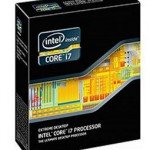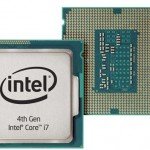Intel Core i7-5960X Extreme Edition
Intel Core i7-5960X Extreme Edition Review – We’ve known for quite a while that there would be a Haswell-based Extreme Edition processor that brings quad-channel memory support and more than twice as many PCI-E lanes as the recently launched Devil’s Canyon processors. Despite our utter lack of suspense regarding its existence, however, the Core i7-5960X Extreme Edition still impressed us once we put it through its paces.
Perhaps knowing how much we’ve been anticipating the launch of this processor and platform, Intel shipped the 5960X (and an Intel 730 Series SSD) in a nifty, hand-painted, hexagonal Containment Unit, which dramatically lights up and reveals the goods with some serious sci-fi flair.
The 5960X is a 22nm chip that consists of 2.6 billion transistors and measures 356mm2. This is an octo-core processor with Hyper-Threading enabled, giving it the muscle to handle 16 threads at once. If you regularly work (or play) with applications that can utilize more than a handful of threads, then this processor was built with you in mind. When compared to Intel’s quad-core Core i7-4790K, this processor offers up to 79% more multithreaded performance.
The core clock of this chip is set to what at first seems like a modest 3GHz, especially considering that fact that last year’s Ivy Bridge-E Core i7-4960X is clocked at 3.6GHz and has a 4GHz Turbo Boost clock. But don’t forget there are 33.3% more cores under the heat spreader of this beast, and the maximum TDP is 140 watts, a mere 10 watts higher than that of the 4960X. With Turbo Boost 2.0 technology, this processor will ramp up to 3.5GHz when there’s room in its thermal envelope to do so. The chip also features a large 20MB Intel Smart Cache shared between all cores and SSE4.2, AVX 2.0, and AES instruction set extensions.
Other features that will surely appeal to power users include 40 available PCI-E 3.0 lanes to support up to four discrete graphics cards (contingent on motherboard support for four-way CrossFireX and/or SLI). DDR4 and quad-channel memory also come along for the ride, and Intel supports DDR4-1333/1600/2133 for a maximum theoretical memory bandwidth of 68GBps.
During testing, we noticed that performances between the Haswell-E Core i7-5960X and the Ivy Bridge Core i7-4960X were not very different when the benchmark was largely dependent on another component (such as in the game tests). Regarding CPUbound tests however, the new processor pulled ahead impressively, scoring 14% better in Cinebench 11.5 and 23% better in POV-Ray 3.7. Memory bandwidth is still very similar compared to Ivy Bridge-E, but this will change in Haswell-E’s favor as faster and lower-latency memory becomes available next year.
If you’re currently running an Ivy Bridge-E system, you won’t see huge leaps in performance unless you’re consistently saturating a dozen threads with the applications you run. On the other hand, for those who have reached the upper limits of what a dual-channel/quad-core platform can deliver, upgrading to the Core i7-5960X makes a lot of sense.
Intel Core i7-5960X Extreme Edition Specifications
- Clock speed: 3GHz (base), 3.5GHz (turbo)
- 8 cores
- Unlocked multiplier
- Socket LGA2011-v3
- Quad-channel memory
- 20MB Intel Smart Cache
- Hyper-Threading
- Turbo Boost
- 22nm
- 140W Max TDP



























